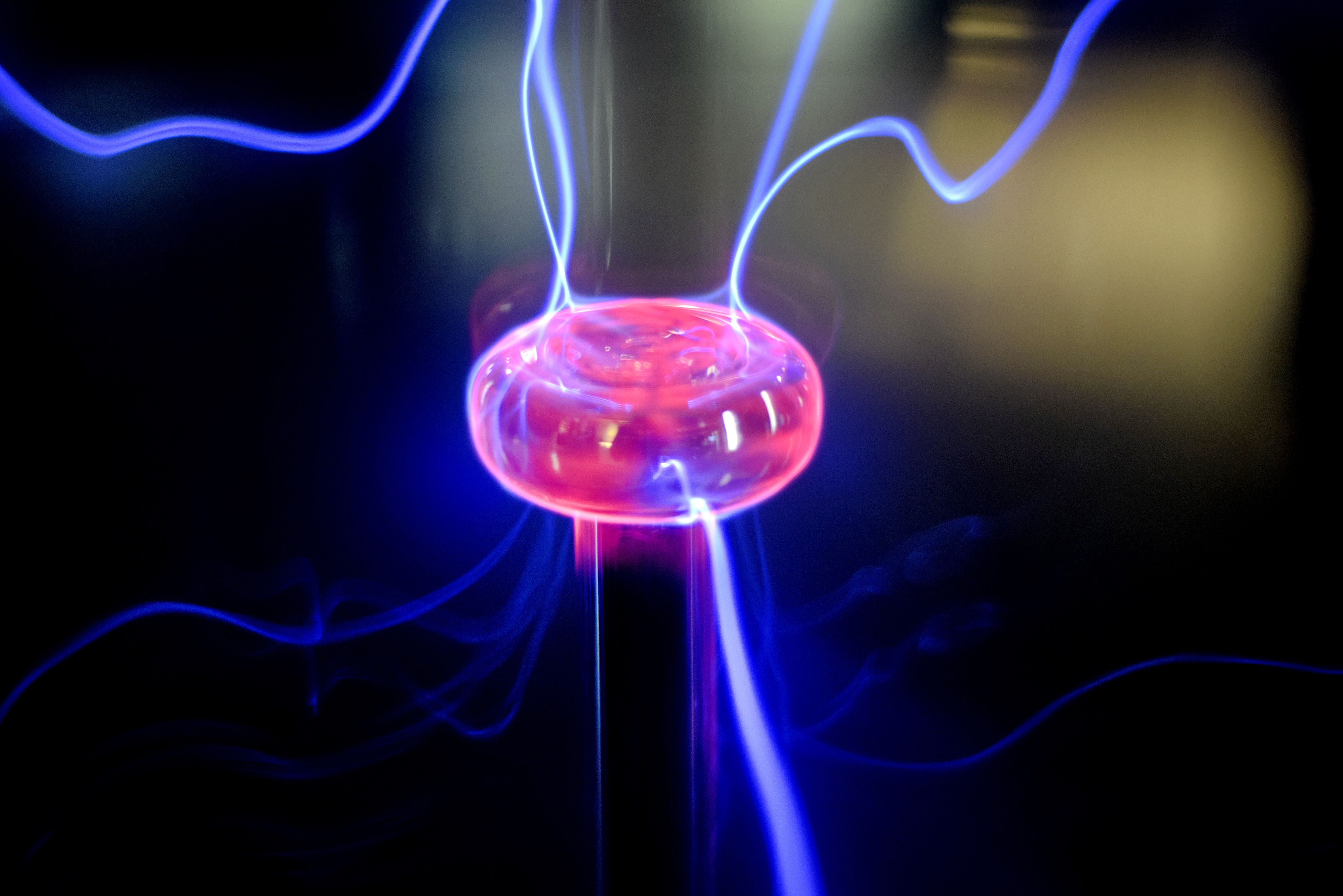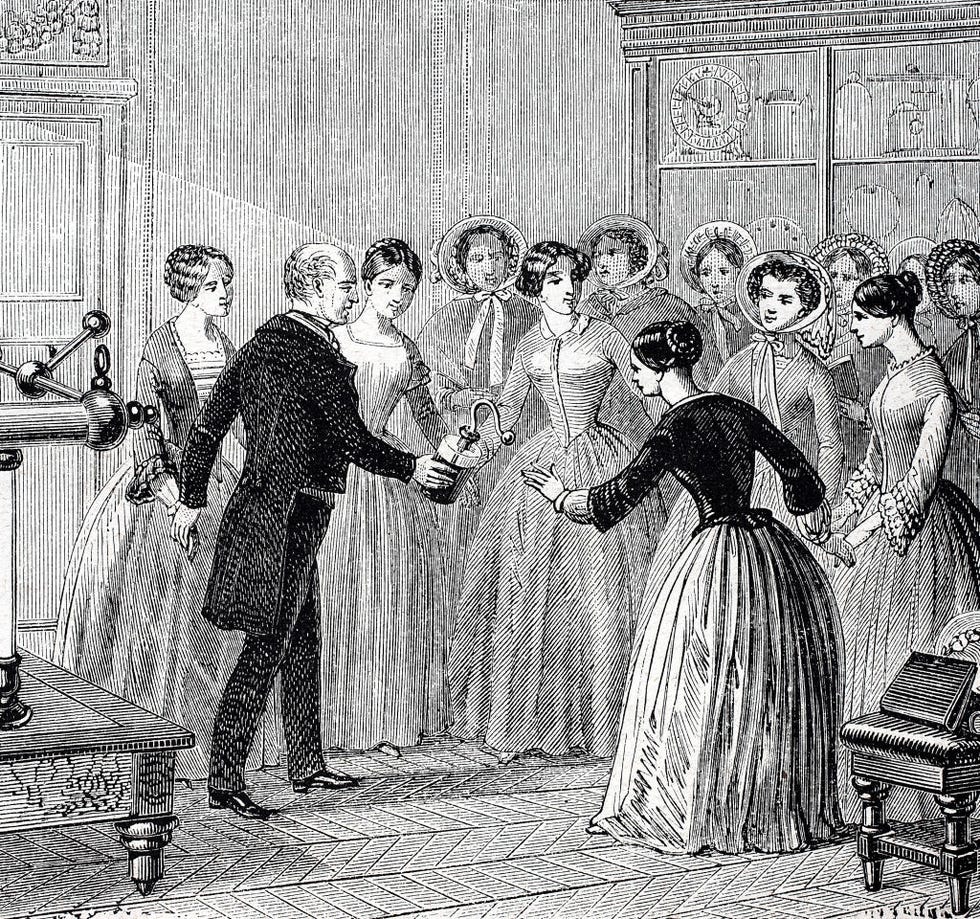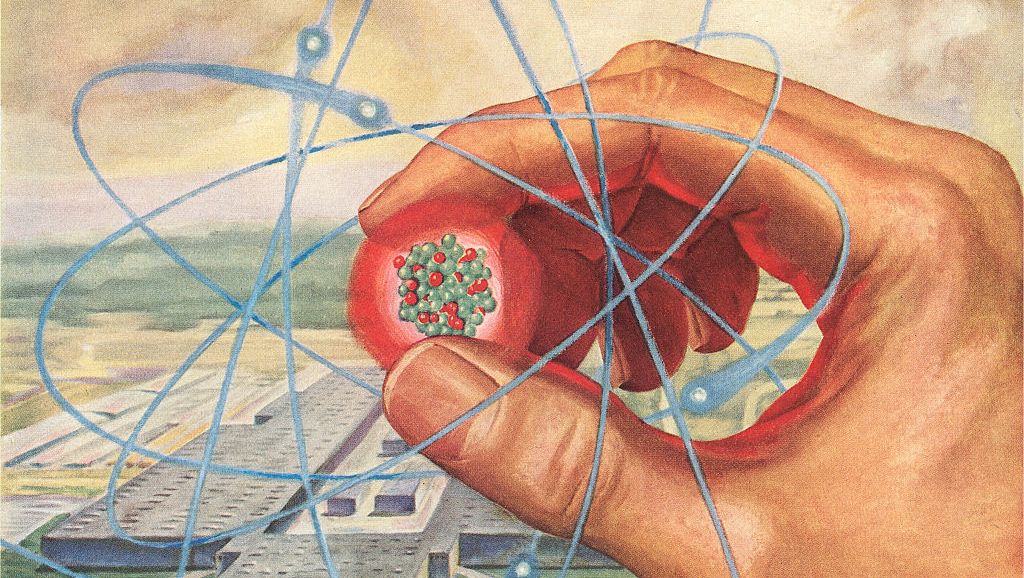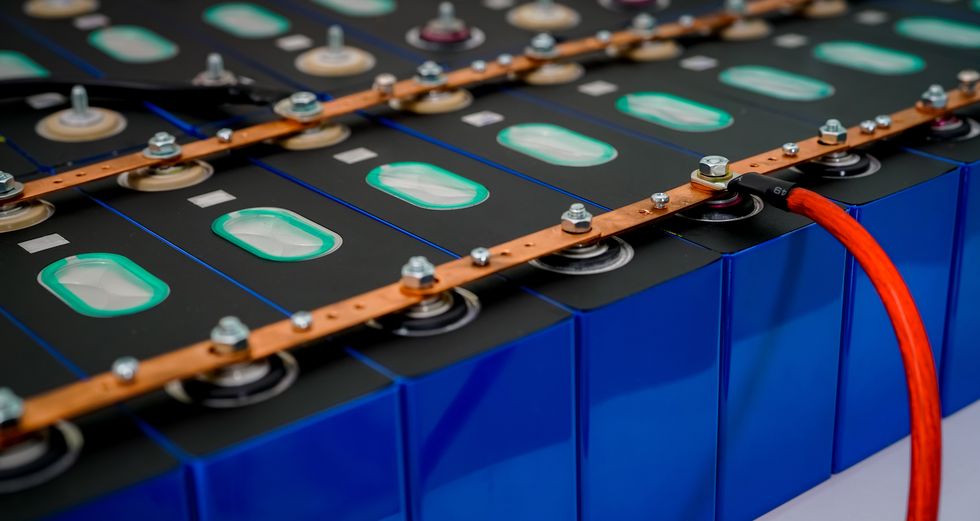Over the millennia, the phenomenon known as electricity has meant different things to different people. In ancient societies, electricity—or more specifically lightning—was inspiration for some of the most powerful gods in pantheons around the world. At the dawn of the Scientific Revolution, electricity was little more than a parlor trick. In the 19th century, the exploration of electromagnetism became a major money-making venture. Today, scientists understand the very atomic properties that power our world.
But even with this remarkable amount of knowledge, many questions remain about the mysteries of electricity. So much so that the 2,600-year-long history of electricity—and of the electromagnetic force more broadly— is really just getting started.
Ancient Origins
The study of electricity, like many scientific pursuits, has its origins in ancient Greece.
Born in 624 B.C., Thales of Miletus is one of the Seven Sages of Greece and a pre-socratic philosopher that many identify as the world’s first scientist. Thales investigated the workings of the world, created mathematical theorems, experimented with magnetism, and crucially recorded the first known observation of electrostatic phenomena.
In his experiments, Thales rubbed different materials together to analyze their electrostatic effect. He noticed that amber when rubbed against hemp or cat fur gained a charge that could attract light materials such as dust or ash. This ancient origin is embedded with how we talk about electricity, because in Greek, the word for “amber” is elektron.
Of course, Thales didn’t know it at the time, but this attraction was caused by objects being positively or negatively charged. Through a process known as “triboelectric effect,” friction can cause the transfer of electrons between objects—a decrease of electrons is a positive charge and an increase of electrons is a negative charge. Because opposite charges attract, Thales’ amber attracted the opposing charge found in the dust and ash.
For millennia after Thales, electricity remained an unexplained natural phenomenon (often with divine explanations) and a largely unexplored curiosity, but in the 17th century, static electricity would once again open the doors for world-changing discovery.
Parlor Tricks and Revolutions
In the early 18th century, English scientist Francis Hauksbee, a one-time lab assistant of Isaac Newton, invented what he called an “electrostatic engine.” He placed mercury in glass, evacuated the air, and built up electrostatic charge by rubbing his hand on the outside of the glass, creating one of the first electrical generators.
Then, in 1729, an amateur scientist named Stephen Gray conducted electrostatic experiments (that strangely involved suspending a boy with silk rope) and discovered that electricity could travel through contact, creating the early ideas of electric current and also conductors and insulators. In material science, conductors are objects—usually metals—that have loosely-packed electrons that allow for the free flow of electricity (think copper, zinc, and gold), whereas insulators are just the opposite and are filled with densely packed electrons like ceramic, glass, and yes, those silk ropes.
While this was well and good, none of these discoveries at first amounted to much use, and so these forms of electrical and static generation became parlor tricks put on by performers known as “electricians.” But the spark (so to speak) had been ignited and scientists, many of whom wondered in awe at these unexplainable electrified performances, decided to dig deeper.
One of those scientists was Pieter van Musschenbroek who, while working in Leiden, the Netherlands, created a jar that could effectively bottle static electricity. Known as a Leyden Jar, this device is now used in all our electronic devices today and goes by another name: a capacitor.
Benjamin Franklin also attended a “flying boy” demonstration in Boston, and in 1752 he set about discovering the intricacies of lightning. Franklin coined “positive” and “negative” in terms of electric charge, and he also wired together a collection of Leyden Jars to make what he called a “battery.” Franklin thought the device mimicked the configuration of a “battery” of military artillery.
Despite all these advancements, the epistemological knowledge of electricity’s properties was still mostly a mystery—but that was all about to change.
A Modern Marvel
In the late 18th century, a scientific rivalry between Italian scientists Alessandro Volta and Luigi Galvani unearthed knowledge about the inner workings of electricity, how it operated in the human body, and crucially, how it could be stored and also how it could produce a continuous charge. While working to refute Galvani’s assertion that “animal electricity” was distinct from other forms of electricity, Volta created the voltaic pile, a tower of copper and zinc disks separated by paper soaked in brine—this was the world’s first battery.
Now the floodgates of invention truly opened. In 1831, Michael Faraday discovered electromagnetic induction and created the first electric generator. This is arguably the greatest discovery of the electrical age as mechanical energy could now be converted into electricity. Today, power plants—whether using coal, natural gas, nuclear, or wind—use turbines and dynamos based on the science of electromagnetic induction.
With these revelations, Samuel Morse invented the telegraph and sent the first message in 1844. The clear commercial benefits of the telegraph, along with James Clerk Maxwell’s equations on electromagnetism in the 1860s, created an unprecedented explosion of innovation from the minds of Thomas Edison, who developed the world’s first power station, Nikola Tesla whose alternating current made those power stations viable, and Guglielmo Marconi, who investigated a type of electromagnetic radiation known as radio waves.
Then finally, some 2,500 years after Thales of Miletus wondered at the attractive properties of his amber, the discoveries of the electron by J.J. Thompson in 1897 and the atomic nucleus by Ernest Rutherford in 1911 finally helped explain what exactly electricity was.
So… How Does Electricity Work?
Electricity, along with magnetism, is part of one of the four fundamental forces of nature—gravity, electromagnetism, weak nuclear force, and strong nuclear force—and focuses on the interaction of charged particles via electromagnetic fields.
But in terms of electricity, it’s all about the electron: a subatomic particle first theorized by French physicist André-Marie Ampère in the early 19th century, then described as an “electrodynamic molecule.” Every atom is made of a nucleus of protons and neutrons surrounded by a number of “shells” containing electrons. While the electrons near the nucleus have strong force of attraction, the electrons farthest away in what’s known as the “valence shell” have a much weaker one.
Sometimes these weak electrons can be pushed out of their orbits and travel from one atom to another. These shifting electrons are what’s known as electricity. Because conductors like copper and silver have only one electron in its valence shell, these elements easily accept more electrons, which makes them conductive. Insulators, on the other hand, have full or nearly full shells which make them resistant to electrical charges. This is represented by what’s called a “band gap,” where conductors have no gap whatsoever whereas insulators have too big a gap for electrons to travel into a higher energy level.
Semiconductors, however, are somewhere in the middle, meaning their band gaps are not zero like metals but can become conductive by using heating, doping, or, most importantly, electrical fields. The most famous of these materials is silicon, which is what makes gadgets (like the one you’re reading this on) possible. These silicon wafers house transistors that change between insulators and conductors thanks to electrical fields. In many ways, the transistor is what turned the page from the electrical revolution to the digital one.
Know Your Electricity Lingo
Watt: A unit of power equal to one joule of work per second, and named after Scottish inventor James Watt, creator of the steam engine.
Voltage: The difference in electric potential between two points, and named for Italian inventor Alessandro Volta, creator of the world’s first battery—the voltaic pile.
Ampere: One ampere (or amp for short) is equal to a specific flow of current (a coulomb) moving past a point in one second, and named for French physicist André-Marie Ampère who first theorized the existence of the electron.
Ohm: A unit of electrical resistance in a circuit when one ampere is subjected to a potential difference of one volt, and named for German physicist Georg Ohm, whose eponymous law expressed the relationship among voltage, ampere, and resistance.
Hertz: A unit of frequency that is equivalent to a cycle per second, and is named for Heinrich Rudolf Hertz, who provided the first proof of electromagnetic waves first predicted by John Clerk Maxwell.
How does electricity work in a house?
The power you enjoy at your home is instantaneously created by a power station that can be hundreds of miles away (thanks, Tesla). That means that the electromagnetic energy flowing through your home was just generated from steam heat (or a photovoltaic cell) milliseconds ago. While the electrons themselves travel very slowly, the electromagnetic waves they propagate travel at nearly the speed of light. So this field can travel long distances; higher voltages means lower current and, in effect, higher efficiency. The energy passes through transformers, which reduce voltage down so it’s usable in your home.
The electronics and lights in your home are essentially circuits. When you turn on your light, you close a circuit allowing electricity to flow through the system. When you turn that same light off, you open the circuit. The same can be said for your TV, refrigerator, and phone charger—anything that’s plugged in uses this system.
How does electricity work in a phone or computer?
While this explains devices in our homes, how do mobile devices maintain an electric charge throughout the day? Lithium-ion batteries are made up of an anode, cathode, electrolyte, and separator. To put it simply, the movement of lithium ions creates a charge in the anode, and that charge powers your device, and then it’s released to the cathode. Once the anode runs out of free electrons, your phone dies.
However, when you charge your phone, lithium ions are released by the cathode and travel back to the anode. Although this chemical back-and-forth makes mobile technology possible, constant recharging slowly degrades the anode, which is why phones steadily lose battery life as they get older.
What’s the future of electricity?
The innovative power of electricity is only beginning. In the age of climate change, engineers are hard at work finding ways to create sustainable primary energy sources—that is, the energy that heats steam to create the secondary energy source known as electricity—and eliminate our reliance on coal and natural gas. While this includes further advancement in wind, solar, and nuclear, it also involves next-gen technologies like nuclear fusion, which aims to bottle the energy-producing potential of our sun for humanity’s growing electricity needs.
Scientists are developing better batteries beyond lithium-ion that are smaller and more efficient while also designing large-scale systems for storing green energy. Physicists are also leveraging quantum computers to discover superconductive materials—that is, materials with zero electrical resistance—that can operate at room temperature, which would make our existing energy systems much more efficient.
All these advancements only show that the electricity revolution isn’t just a moment in history—it’s one that’s actively shaping our future each and every day.
Darren lives in Portland, has a cat, and writes/edits about sci-fi and how our world works. You can find his previous stuff at Gizmodo and Paste if you look hard enough.



















